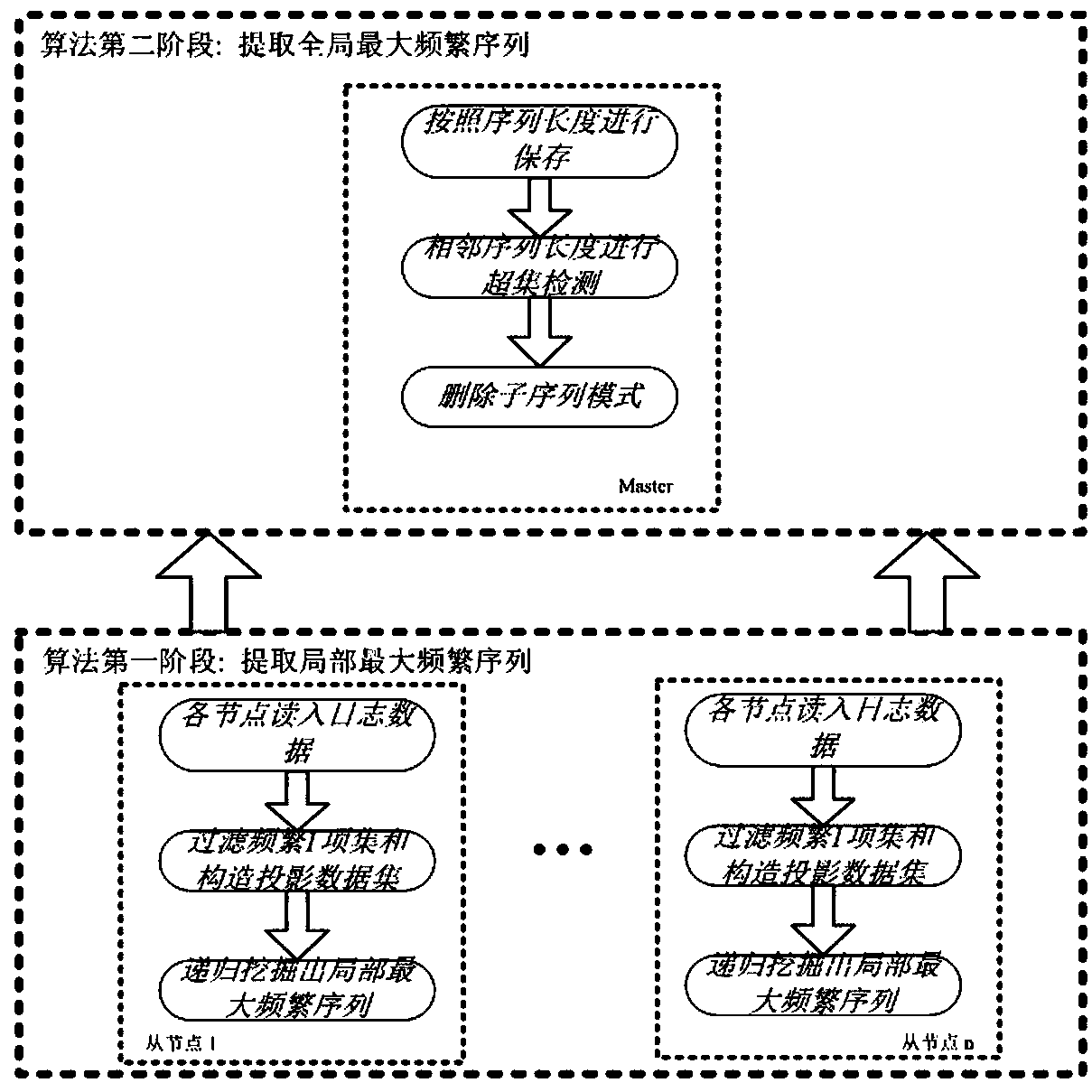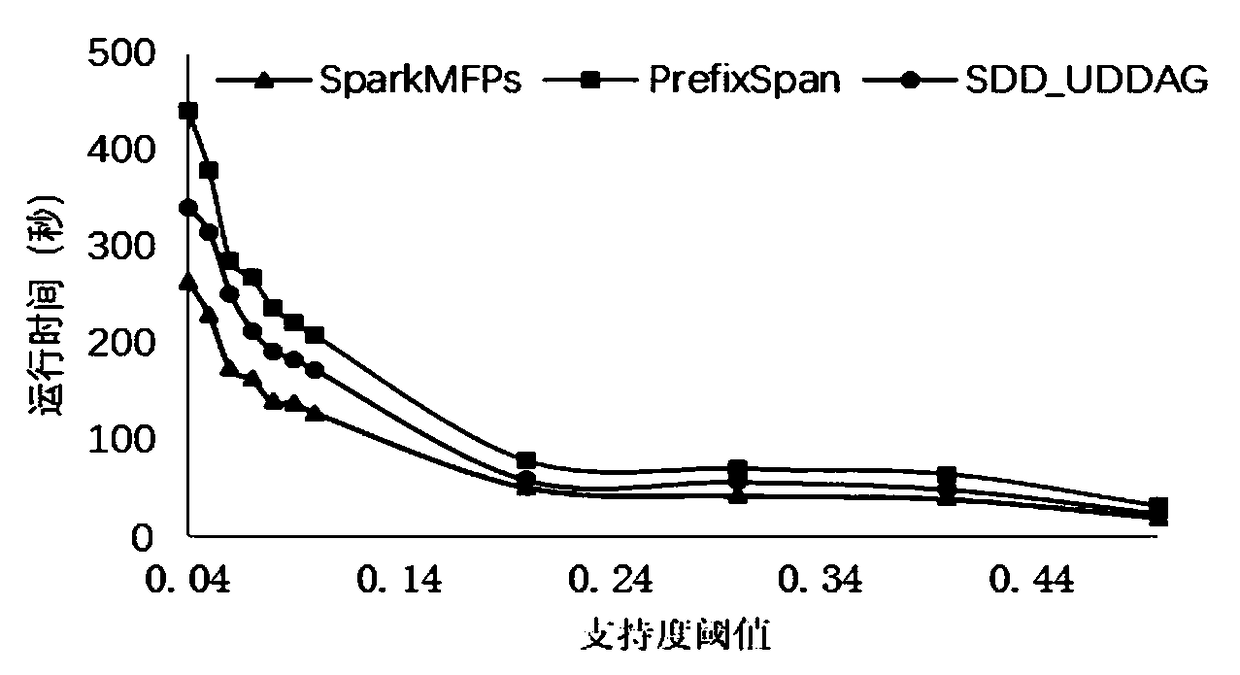Maximal frequent sequential pattern mining method based on distributed log
A frequent sequence and pattern mining technology, applied in special data processing applications, instruments, electrical digital data processing, etc., can solve problems such as low efficiency, lack of parallel extraction of sequence patterns, and high cost of running time, and achieve the effect of solving mining problems
- Summary
- Abstract
- Description
- Claims
- Application Information
AI Technical Summary
Problems solved by technology
Method used
Image
Examples
Embodiment Construction
[0027] The technical solution of the present invention will be specifically described below in conjunction with the accompanying drawings.
[0028] Efficient log sequence analysis mainly involves three steps: log preprocessing, log sequence pattern discovery, and log analysis, among which the improvement of log sequence pattern mining algorithms is the key direction of recent research. At present, a large number of sequential pattern mining algorithms have been proposed in academia, which can be roughly divided into three categories after summarization: algorithms based on Apriori characteristics, algorithms based on vertical grids, and algorithms based on projection databases, as shown in Table 1. Most of the early sequential pattern mining algorithms were developed based on the Apriori feature. They can effectively mine frequent patterns, but the algorithm needs to scan the database multiple times and generate a large number of candidate sequences; for the second type of algo...
PUM
 Login to View More
Login to View More Abstract
Description
Claims
Application Information
 Login to View More
Login to View More - Generate Ideas
- Intellectual Property
- Life Sciences
- Materials
- Tech Scout
- Unparalleled Data Quality
- Higher Quality Content
- 60% Fewer Hallucinations
Browse by: Latest US Patents, China's latest patents, Technical Efficacy Thesaurus, Application Domain, Technology Topic, Popular Technical Reports.
© 2025 PatSnap. All rights reserved.Legal|Privacy policy|Modern Slavery Act Transparency Statement|Sitemap|About US| Contact US: help@patsnap.com



